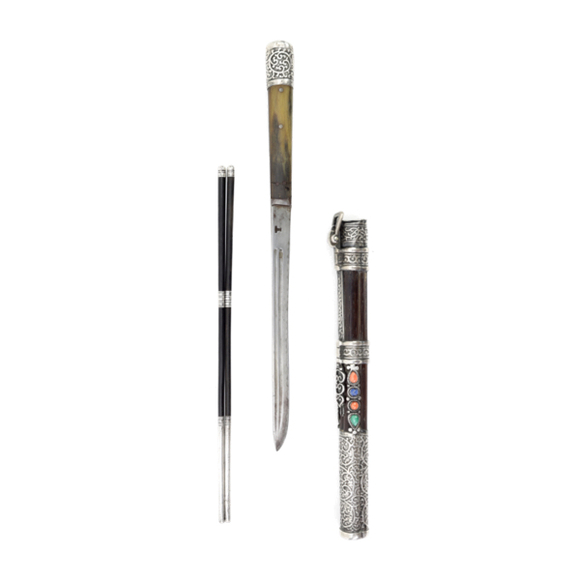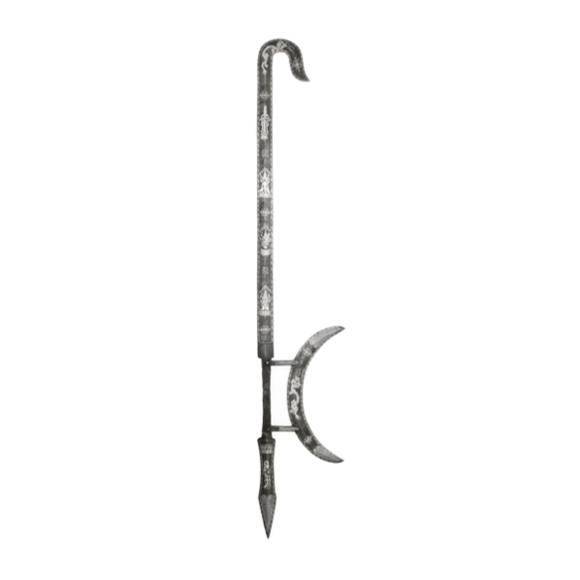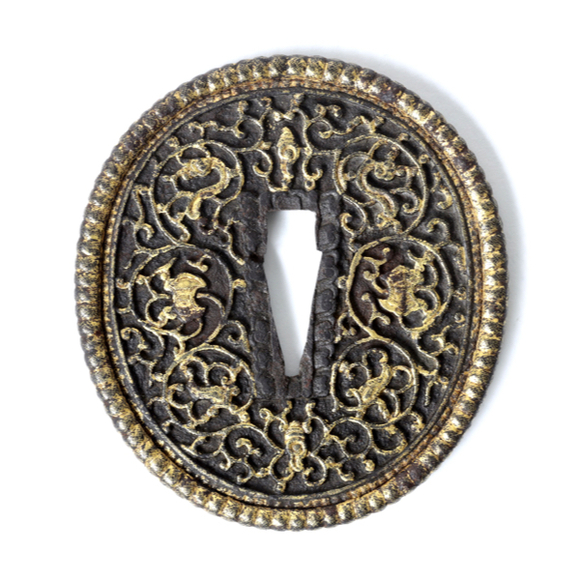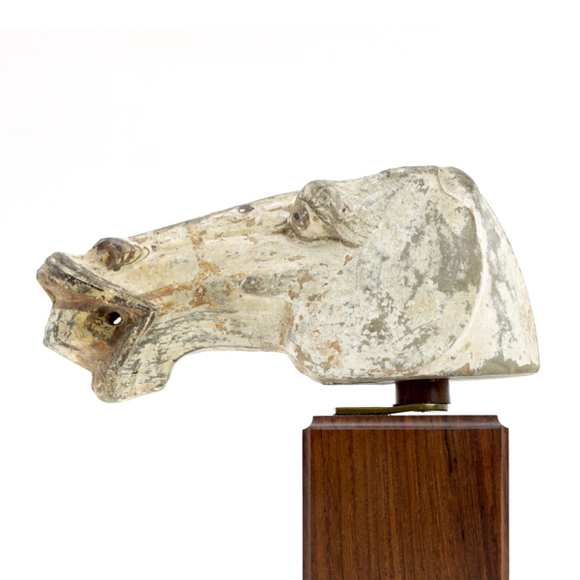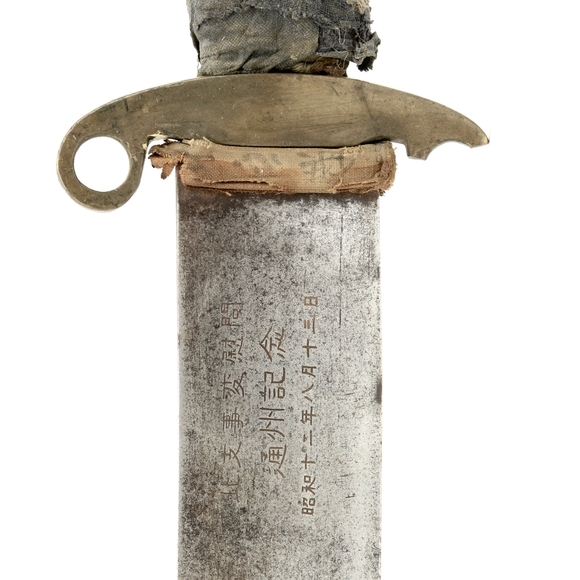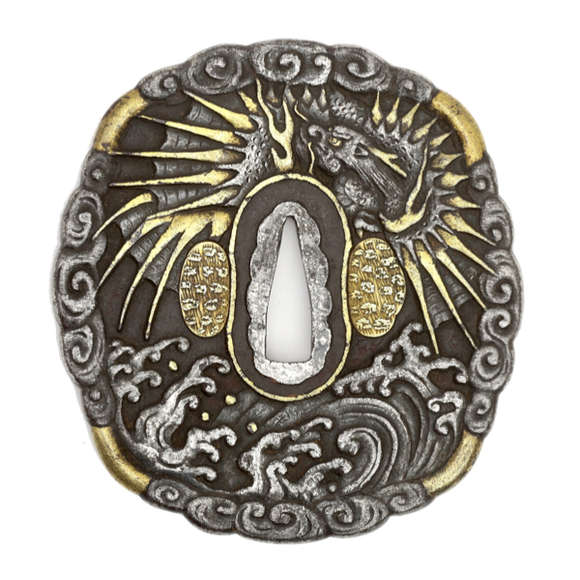Language: Mandarin Chinese
Source: Classical literature
Description
Biān (鞭) literally means "whip". It is used to describe both conventional whips as iron whips, called tiěbiān (鐵鞭) which in turn could either be a flexible weapon made of iron segments, or a heavy bar-mace.1
 A ruǎn tiěbiān (軟鐵鞭) or "soft iron whip".
A ruǎn tiěbiān (軟鐵鞭) or "soft iron whip".
Anonymous private collection.
 A rigid iron mace, called tiěbiān (鐵鞭) or "iron whip" or zhújié biān (竹節鞭) or "bamboo-sectioned whip".
A rigid iron mace, called tiěbiān (鐵鞭) or "iron whip" or zhújié biān (竹節鞭) or "bamboo-sectioned whip".
Sold by Mandarin Mansion in 2018.
Also see:
Tiěbiān (鐵鞭) or "iron whip"
Ruǎn tiěbiān (軟鐵鞭) or "soft iron whip"
Zhújié biān (竹節鞭) or "bamboo-sectioned whip"
Etymology
It may come across as strange that the term "whip" is used for a very stiff mace. It refers to niúbiān 牛鞭, bull pizzles, which were used as whips for flogging but were essentially rigid as well.
 A dried pull penis to which the tiěbiān lends its name.
A dried pull penis to which the tiěbiān lends its name.
Notes
1. Shàolín gùn fǎ chǎnzōng (少林棍法闡宗) or "Explanation of Shaolin Staff Methods" by Cheng Zongyou (程宗猷). Cheng Zongyou spent 10 years studying martial arts in Shaolin temple and learned Japanese sword fighting from Liu Yunfeng.

